So NaNoWriMo has come and gone. The challenge was to write 50,000 words in 30 days, which I did.
In fact, I wrote 72,143 words in 30 days (78,143 in total), and this is how I did it.
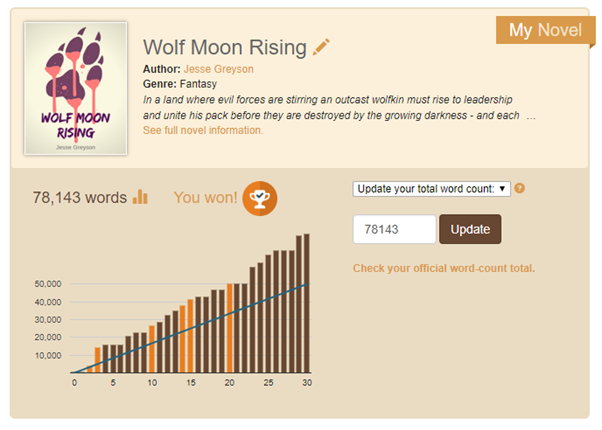
Step 1 – Randomly decide to compete in NaNoWriMo at the last minute because you heard all your writer friends talking about it and it sounded cool.
I attended the 2018 Writing Excuses cruise and it was a life changing experience. I met many cool people and partook in many fascinating conversations, one of them being about NaNoWriMo, otherwise known as National Novel Writing Month. (See my previous blog post for an explanation of NaNoWriMo). People talked about NaNoWriMo with such enthusiasm that I vaguely contemplated doing it. And then promptly forgot all about it.
Fast-forward a month and I’m back home in Australia. Two weeks before NaNo starts I suddenly decide (and I blame twitter for this) that I will participate. I had no planning done. I had only the vaguest concept in mind for the book I was going to write next. I had not had any time to daydream about it (a fundamental of my writing process). Due to health issues, I had not written creatively for most of 2018.
And yet here I was committing to writing 50,000 brand new shiny words in thirty days for an as-yet-to-be-conceptualised novel.
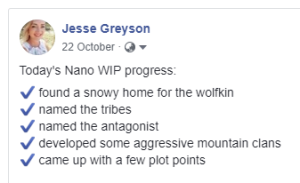
Step 2 – Panic. Wonder what you’re going to write about for 50,000 words.
I am in the process of writing a series of stand-alone-yet-connected books that all take place at a pivotal time in the ShadowStar lands.
I have written three already (The Fated Sparrow, The Truth About Dragons & Where The Wolf Dreams) and during my research for those, I stumbled upon an article that gave rise to the concept for my fourth novel.
In this article, wolf researchers mentioned that they had seen an omega wolf fight it’s way up to the alpha position and I thought to myself ‘what a cool story that would be to tell’. And filed the story idea away for later.
Yes, this idle thought was the entire premise with which I was to create my NaNo novel.

Step 3 – Start planning your novel. (Also known as ‘do I need pants for this?’)
How? How does one plan a novel? This was my fourth attempt and I still can’t tell you because I am still refining the process, and discovering what does and doesn’t work for me.
I find my novels tend to be a bit thin in the third quarter. I know how they start. I know how they end. I know the individual character arcs and the emotional resonance I’m aiming for.
I can get my characters to the catalyst moment and then throw them out into the world, but in the shenanigans section of the novel, my writing tends to get a little wobbly.
So I am always seeking new ways to plot through these troublesome spots.
Plotting Versus Pantsing
Some people like to have every plot point accounted for before they start writing. This way they can better manage the stories twists and turns. Some people go so far as to have every scene mapped out in an Excel spreadsheet before they start writing. I have tried this and many other plotting methods, such as the Snowflake Method, but I personally find them too stifling. They smother the creativity within me. When my novels are plotted like this I am bored of them before I even start writing.
Pantsing (a.k.a flying by the seat of your pants).
I wrote my first novel from beginning to end, figuring out what would happen in the following day’s chapter as I lay in bed each night. The novel was (still is) terrible. But the experience taught me two things:
1) I needed to go and seriously study the craft of writing.
2) 100% pantsing a novel wasn’t going to yield me my best results.
Since then I have been cobbling together an outlining strategy that combines the elements of both plotting and pantsing. It is important to remember that novel planning occurs on a spectrum. Very few people are 100% plotters or pantsers.
Step 4 – Outlining
I loosely use the Brandon Sanderson ‘story bible’ method to sketch my first outline of a novel. I use a Word document and the Headings tool to make the document easy to manipulate as you can see below.

First I write down anything I already know; Moments of Awesome, scenes I see in my mind’s eye, how it starts, how it ends, snippets of dialogue, the ultimate fate of each character etc. That usually leaves me with about 90% of the novel to still figure out.
After that, I apply a story structure to sign post my way from point A to point B to point C.
For The Truth About Dragons, I used the classic Hero’s Journey story structure. After all, if it worked for George Lucas in Star Wars, why not for me?
Here’s what the Hero’s Journey looks like:
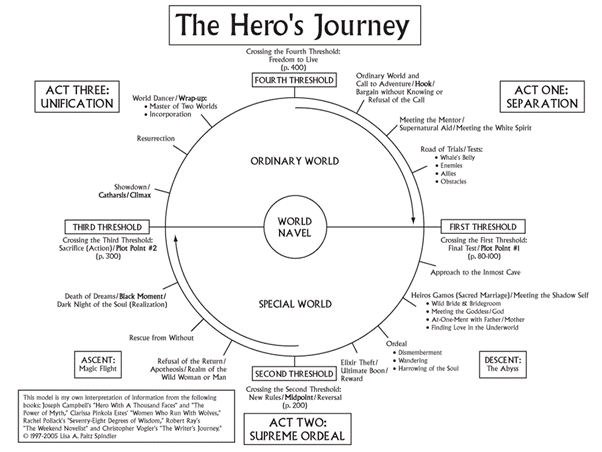
When I started writing The Truth About Dragons I adhered closely to this storytelling format but as The Truth About Dragons progressed I deviated from the hero’s journey because hey! I’m a natural pantser and also a dead-set rebel. Nobody tells me what to write! Though if I looked closely I’m sure I’d find I’ve still subconsciously hit most of these beats.
With my fourth novel, Wolf Moon Rising, I decided to loosely use Blake Snyder’s script writing formula from ‘Save The Cat’.
I liked that once I had my post-it notes up on my board the story structure was very easy to see and understand. Instead of each card referring to a certain page number in the script and a certain number of minutes in movie time I allotted each one 2,000 words. 40 cards times 2,000 words equals an 80,000 word novel.
Here is my adaption of the cards taken from Blake Snyder’s Beat Sheet Calculator:
Act 1 – the hero is an orphan (be it literal or metaphorical) – 20,000 words
1. Opening Image
2. Theme Stated
3. Setup – At Home
4. Setup – At Work
5. Setup – At Play
6. Catalyst
7. Debate – At Home
8. Debate – At Work
9. Debate – At Play
10. Call To Action (break into the second act)
Act 2a – The hero is a wanderer (they have been cast out into the new world) – 20,000 words
1. Intro the B story (usually the love interest)
2. Fun and Games 1 (The protagonist is doing all the cool things in the film. He is investigating the case, chasing down the bad guys, taking exams, or whatever conflict is the routine of his new upside-down world)
3. B story part 2
4. Fun and Games 2
5. B Story Part 3
6. Fun and Games 3
7. B Story Part 4
8. Fun and Games Part 4
9. Mid-Point Part 1 (The false victory. Hero gets everything he thinks he wants. Or if it’s a false defeat, the hero loses everything he thinks he wants. Either way, the bad guy discovers who the hero is, or where he is, the A and B stories cross, a time bomb drops, and the pace quickens)
10. Mid-Point Part 2
Act 2b – The hero transforms to warrior (the Hero hero’s-up and prepares to face what lays ahead) – 20,000 words
1. Bad Guy Closes In – External Doubts From Others
2. Try/Fail Cycle 1
3. Bad Guy Closes In – Internal Self Doubt
4. Try/Fail Cycle 2
5. Bad Guy Closes In – External Doubts From Others
6. Try/Fail Cycle 3
7. Bad Guy Closes In – Internal Self Doubt
8. All Is Lost
9. Dark Night Of The Soul
10. Break Into Three (This is a proactive decision by the protagonist to move forward in response to the All Is Lost)
Act 3 – The hero transforms from warrior to martyr (the hero succeeds or not and prepares for life in the new world order) – 20,000 words
1. Gather The Team 1
2. Gather The Team 2
3. Storm The Castle 1
4. Storm The Castle 2
5. High Tower Surprise 1
6. High Tower Surprise 2
7. Dig Deep
8. New Plan Triumphs/Fails
9. Dénouement
10. Final Image
Here’s what my storyboard looked like before I started writing Wolf Moon Rising:
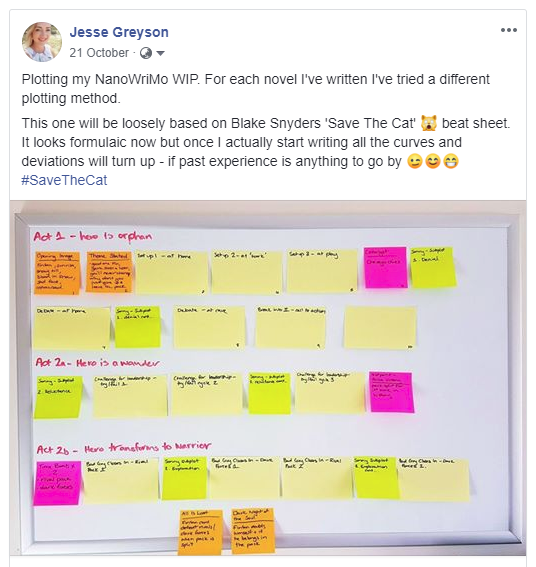
Here’s what it looked like by the end:

Okay, well that was the ‘planning what to write’ part. Now what?
Step 6 – Actually writing The Thing. Every. Day.
NaNo is all about developing the habit of writing regularly and getting words on the page.
If you were to start with 0 words on Day 1 and finish with 50,000 words on day 30 you need to write an average of 1,666 words a day.
The average typing speed is 40 words per minute (I asked Google and Google would never lie to me).
That means to write 1666 words at 40 WPM you need to set aside 42 minutes of writing time per day. That doesn’t sound too hard does it?
I started recording my words per minute to see just how fast I really typed and the results are below:
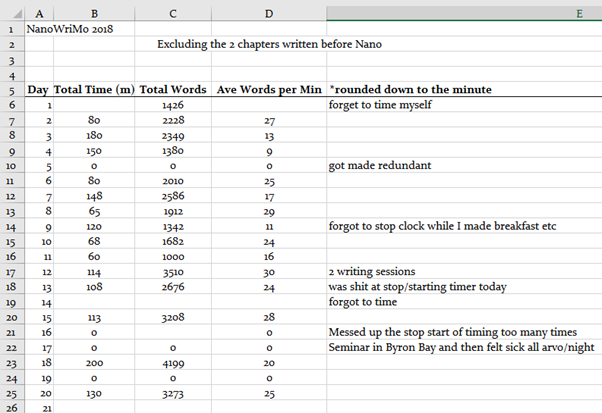
The thing that the ’40 WPM average’ doesn’t factor in is that we’re not just typing, we’re creating worlds as we go. And that process sometimes slows us down. It also doesn’t factor in that I’m easily distracted by shiny things, such as Twitter, Facebook, making breakfast and research for that new character’s name.
As you can see, remembering to start and stop a clock is not my forte. What I did learn though was when I am in ‘flow’ I write about 25-30 words a minute. When it’s a struggle I write about 10-15 words a minute.
So – I’m not a fast writer (having psoriatic arthritis also contributes to that).
What I do have going for me is that I naturally write a chapter a day when writing a novel. Finishing each writing session at the end of a chapter gives me the sense of closure and achievement I need.
I treat my writing like a professional career, and because my work days are so full I spend my weekends writing to ‘catch up’. I will typically do 8 – 16 hours of writing and writing-related work each weekend (web site maintenance, blog posts, social media management, editing, critiquing, attending writing groups etc).
So, now that I was not working, how many hours a day did I spend writing creatively?
Anywhere from one hour to four hours a day. This was about all the ‘new’ writing my brain could handle before feeling burnt out. (I still did other writing though, editing, critiquing, blog posts etc)
Having this amount of time at my disposal definitely gave me an advantage during NaNoWriMo.
Step 7 – Freak out. Ignore the Outline.
Despite having a lot of free time, trying to meet my NaNo word count of 80,000 words was still extremely gruelling. It was a chore.
So many days I had to force myself to stay seated at the desk and get the words out when I just wanted to go play outside in the sunshine with the dogs.
Sometimes the writing experience was great and I discovered aspects of the story and world I really liked. Some days I intuitively knew what I was writing didn’t work on some level but I didn’t have the luxury of figuring out why (because I had to meet that all-important word count).
Most days I was [square bracketing] things I knew I needed to come back and fix later such as:
• character names
• place names
• time elapsed versus moon phases (it is a novel about wolfkin after all)
• layering of the senses. (I particularly want to come back through and focus on smell being the first sense used)
• blocking for fight scenes
and so on
Also, that precious outline? It was frequently scrapped or changed as the story took on a life of its own. (This is the reason why I don’t fear my stories being too formulaic when applying a story structure to them). Here’s an example:

As you can see, none of what I had originally planned here came to fruition.
I also discovered that staying at home writing is hard work, but it’s hard work I want to do. I’ve always hated working in an office and dreamed of working from home so I wouldn’t be chained to a desk. The reality is I’m still chained to the desk. I still wake up early (I let myself sleep till 5 am now that I am not working) come to my desk and start writing. I did that this morning and I’m still here. It’s now 2 pm and I haven’t moved except to make breakfast and lunch. The difference is now I am working on things I care about.
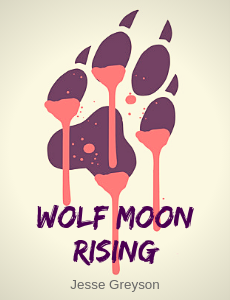
Step 8 – I won NaNo. Now What?
Congrats! You won NaNo.
You wrote 50,000 words or 80,000 word or some amount of brand new, shiny words. What to do now?
If your novel isn’t finished, FINISH IT.
Pretend NaNo is still happening until you can write The End. That’s my advice to you.
And once you have written The End, put that novel in that metaphorical draw and leave it alone. It needs to steep. And you need to rest.
Go, give yourself a pat on the back, and have a break from it for a while.
And by no means should you submit it to any agents or publishers in December or January following NaNoWriMo.
Go work on something else, and then when you feel ready, come back and read your NaNo novel. Discover the story you really wrote versus the one you thought you were writing. Discover the themes you didn’t even know you were laying down. Make acquaintance with the characters and the world and see who they really are for the first time.
And then once you have read your NaNo novel through it is time to start the editing process.

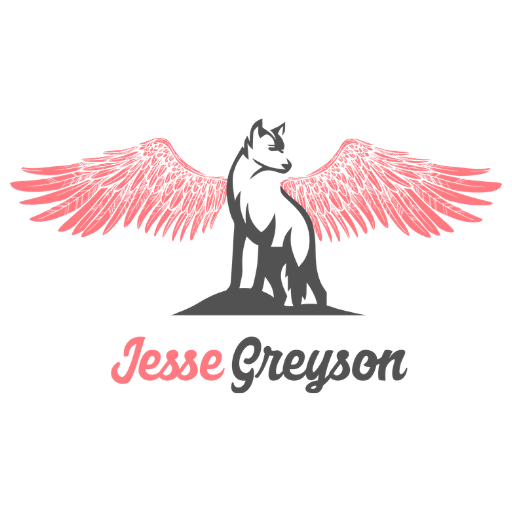

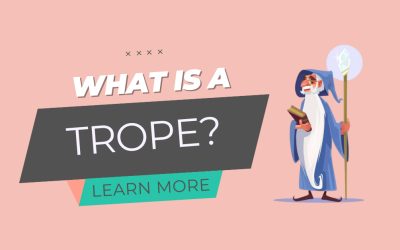


0 Comments